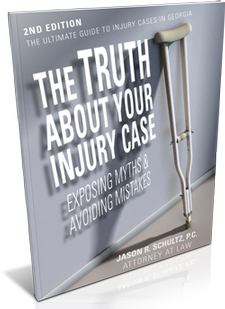Stay informed about news that is relevant to your personal injury claim by reading these news articles. Here, you can find out information about recent and upcoming firm events, relevant and interesting stories from the news, and more.
- Page 1
-
100 Deadliest Days of Summer Kicks Off May 28, 2018The 100 Deadliest Days of Summer begins May 28, 2018. Stay safe on the road with these tips for teen drivers.
-
AAA Report: Hit and Run Fatalities at All-Time HighAAA report says hit and run deaths are higher than ever, and most are bicyclists and pedestrians. Click here to learn more.
-
2017 Bicycle Report Shows Atlanta Becoming More Bike FriendlyThe City of Atlanta released its Annual Bicycle Report which reveals progress on bike paths, local art, and the Relay Bike Share Program. Learn more here.
-
Study: Phones & Passengers Are Sources of Driver DistractionTexting or talking while driving, either on the phone or with your passengers, are major sources of distraction. Click here to learn more.
-
Report: Georgia Pedestrian Deaths Drop in First Half of 2017Georgia pedestrian fatalities went down in the first half of 2017, says a new GHSA report. Click here to learn more about the report’s findings.
-
Proposal Would Create Trucks-Only Lanes on Georgia HighwayThe Georgia DOT wants to build separate trucks-only lanes on I-75 between Atlanta and Macon. Learn more about the proposal here.
-
Report Says Georgia Has Some of Worst Traffic in the WorldAtlanta has the fourth worst traffic in America and the tenth worst in the world. If you have been in an accident, call 404-474-0804 for a free consultation.
-
New App May Mean Higher Insurance Rates for Texting DriversAllstate is considering a new app that detects when drivers use their cellphones, giving the company reason to raise their premiums. Learn more here.
-
NTSB: Nearly One-Third of Traffic Deaths Speeding RelatedA new NTSB report reveals that speeding accidents make up nearly one-third of traffic fatalities. Click here to learn more about the report.
-
Georgia State Route 11 Car CrashesState Route 11 is the most dangerous highway in Georgia, with the highest fatal crash rates. Learn more about the report and staying safe on our roads here.

